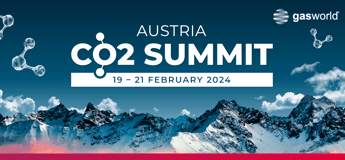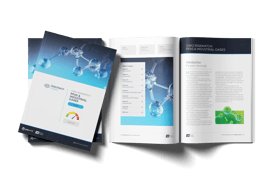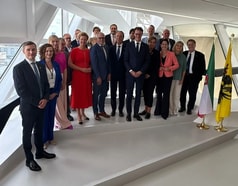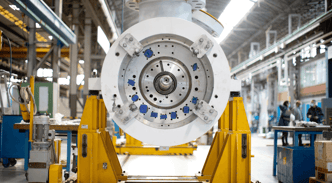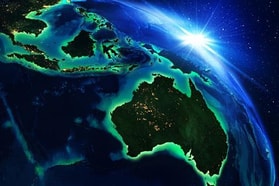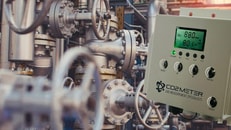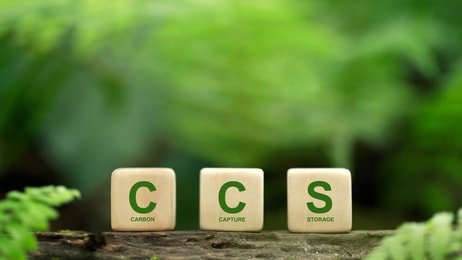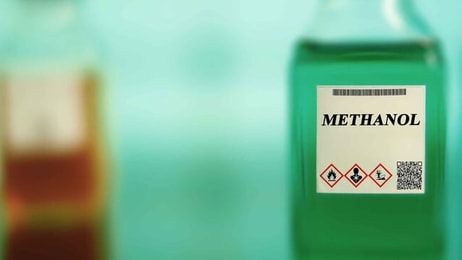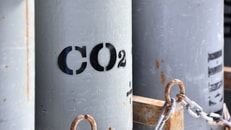European CO2 Summit 2024: Preview
What side of the fence do you find yourself on when faced with a word association challenge in CO2 (carbon dioxide) supply: challenge or opportunity? Do you think crises, or circular economy? As an end-user are you more ‘long-term procurement strategy’ or are you more accustomed to playing your chips on the roulette wheel of the spot market?
Soaring gas prices, ever tightening margins in ammonia markets, temporary plant closures, and maintenance downtime are all major factors that have been – and continue to be – contributing to an increasingly volatile carbon dioxide (CO2) market in Europe in recent years. These are the takeaways that are likely to draw many to the side of ‘challenge’ or even ‘chaos’ with their first thoughts of CO2 supply.
And yet, these challenges inevitably present new opportunities for the entire breadth of the CO2 supply chain, including traditional industries such as the ammonia market and nascent sectors such as carbon capture and biogas upgrading. Such openings and positive PR-laden business strategies that lead many to focus on the sense of opportunity ahead for CO2 stakeholders.
This double-edged sword in CO2 sourcing and supply dominated the headlines at gasworld’s European CO2 Summit 2023 in the Austrian mountains in early March 2023. So much so that illustrious opening keynote speaker Eduardo Gil Elejoste, President of Nippon Gases Europe, drew both a stark and succinct analogy as he quoted the rhyme of the ancient mariner.
“’Water, water everywhere, nor any a drop to drink,” he proclaimed, likening the dying thirst of sailors surrounded by water to the current CO2 climate. “CO2 seems to be everywhere, but not in a form that we can reliably use.”
2023: Focus on sourcing
Perceived as largely negative, the general public have historically had a negative view of CO2 due to global warming and climate change and its impacts on food security.
Yet the properties of CO2 make it interesting for a range of commercial applications including chemicals, beverages, the food industry, metallurgy, wastewater treatment, the energy sector, semiconductors, air conditioning and more.
“The acceptance of CO2 is a highly useful gas due to the increased consumption to the increasing number of applications,” Gil had noted in his talk in March.
The key source of that commercial CO2 is ammonia production, responsible for around 50% of CO2 sources available today. This reliance on ammonia is today viewed as a disadvantage, as when things inevitably go wrong, the risk of shortages increases.
“In 2018, a chain reaction of failures caused a CO2 shortage in the market. Last year (2022), the unprecedented rise of the natural gas cost in Europe made ammonia production in Europe not economical, putting the CO2 industry under extreme difficulties,” Gil confirmed. “Now our customers are asking us about our strategy…”
Gil proceeded to outline that strategy in his keynote, explaining how Nippon Gases had recently embarked upon its Carbon Neutral World strategy, focusing on five key pillars and creating an increasing number of industries capturing or planning to capture their CO2 emissions and making them available for market.
He also outlined the following as several threats to the CO2 industry going forward:
- The reduction of the ammonia production in Europe for economic reasons
- Carbon capture and storage, driven by political decisions and heavy subsidies
- The rapid development of processes to capture and storage huge amounts of CO2
- The chemical industry as a competitor to CO2 markets.
Despite this, Gil noted how CO2 emissions in the EU in 2020 made up 5.84 metric tonnes per capita per year, while the yearly demand for CO2 is 3,500,000 metric tonnes per year – 0.13% of all CO2 being produced.
“No matter how much CO2 will be captured in the next few years, we will still be able to find source,” he enthused, coming full circle to that rhyme of the ancient mariner once again. “Some will continue seeing water, water everywhere nor any a drop to drink, while others will find a way to navigate to a river of sweet, fresh, water.”
New for 2024: Deeper sourcing insight
In the opening session that followed, delegates heard all about the traditional sourcing and supply chain for CO2 markets in Europe, particularly the ammonia/fertiliser business, and how green CO2 produced from biogas could play a key role in navigating to that sweet, fresh and secure supply of CO2.
When the European CO2 Summit returns to the stunning mountain-top Telfs location in Austria next month (February), the focus will be on providing even deeper insights into that sweet spot in CO2 sourcing.

In addition to BioCarbonics’ Christopher Carson (pictured) returning to the gasworld stage to discuss Europe’s CO2 markets as a whole in 2023/24, and a new face from CRU to adorn delegates’ knowledge of fundamental ammonia and fertiliser feedstocks across the Continent and indeed the globe, there will be a dedicated outlook provided on the biogas sector in Europe and beyond.
Charlotte Morton, OBE, Chief Executive of the World Biogas Association (WBA), will set out the landscape in biogas policy, projects and plant capacities not only in Europe but set against the context of the global stage – key insights that will inform the strategic thinking of all those looking to biogenic CO2 as the next frontier in supply.
Many believe biogas holds the key to unlocking decarbonisation in this decade, and Morton told gasworld TV in 2023 that biogas is ‘absolutely what the world needs’ if the world is going to keep temperatures to ‘anywhere close’ to 1.5ºC.
“…as the UN said at our first World Summit, biogas really is a win-win-win technology. And having demonstrated our potential, our focus today is very much on facilitating the industry to rapidly scale up, to be able to deliver its potential to cut methane emissions this decade,” she enthused.
“That’s obviously quite an ask – 2030 is just over six-and-a-half years away. But it’s absolutely what the world needs.”
It’s not just the decarbonisation impact it can have, but the value creation that biogas brings that makes this pathway stand out from the crowd. Waste utilisation, emissions reduction, value-added by-products and jobs creation: a perfect example of the circular economy in the here and now. And with as much as 40% of the biogas essentially bioCO2 waiting to be utilised, the opportunity is abundant.
European CO2 Summit 2024 at-a-glance 2023: Introducing circular economies Presented with the prospect of supply limitations associated with traditional CO2 sources, industry is looking to diversify sourcing and also attempt to decarbonise its processes to help drive a circular economy. An introduction to these diversified projects and the technologies behind them was the subject of Session 3 in Austria just over 12 months ago. This included a talk from Chart Industries’ Tomas Hnizdil as he explained the company’s solutions surrounding traditional CO2 distribution, in addition to delving into the role played by the company in developing its ‘Nexus of Clean’. It also included talks on fuel cells and circular economies, as well as an exploration of biogenic CO2 potential from LANDWÄRME GmbH. New for 2024: What next for circular CO2? If Session 3 in the CO2 Summit last year made something of an introduction to the circular economies approach in CO2 markets going forward, then the insights will only sharpen in Session 2 at this year’s event. Following on from the opening keynote and a first session tackling all aspects of the sourcing pathways, this session will drive down into the critical detail of these circular economies and crucially – echoing the Summit’s overarching theme – What Needs to Happen Now? The playing field in biogas markets and how to capitalise on these opportunities will be presented by José Vicente Sánchez, Marketing and Business Development Director at Nippon Gases España, S.L.U. Dovetailing with this talk, John Cosmo Dwelle, Head of Business Development, Sustainability & Verification at LANDWÄRME GmbH, will return to dive into even greater detail into the biomethane sector and the promise it presents. LANDWÄRME is one of Europe’s leading biomethane trading companies based in Munich, Germany and in addition to biomethane trading, the company plans and operates biogas upgrading plants and offers services along the entire biomethane value chain. Dwelle will explain how the biogenic CO2 value chain is not only a secure sourcing route, but also a compelling path to carbon removal. Chart Industries will discuss taking carbon capture beyond sequestration as it rolls out an innovative technology in Europe, and Stephen B. Harrison – founder and managing director at sbh4 GmbH in Germany – will take the audience on a journey through CO2 Utilisation for E-Fuels: Technologies, Applications & the Business Opportunity. Harrison’s work focuses on decarbonisation and greenhouse gas emissions reduction. E-fuels, hydrogen, ammonia, and CCTUS are the fundamental pillars of his consulting practice and, in support of the European Commission through CINEA, in 2023 he evaluated seven CCS, hydrogen, and e-fuels submissions to the Third Innovation Fund. The fund allocated €2bn to large-scale decarbonisation projects in Europe. As well as being a charismatic presentation, delegates can expect to leave empowered by a veritable toolbox of knowledge in both the opportunity in e-fuels for CO2 stakeholders – and how to effectively realise it. New for 2024: Live podcast recording Completing the first day of the speaking agenda will be a brand-new addition to the CO2 Summit stage in Austria, a live podcast. That’s right, join hosts Jeff Holyoak and Luke Lana and guests for a dynamic panel discussion and the live recording of the latest episode of the Catching Carbon podcast – exclusively on the gasworld stage. This 60-minute session is your opportunity to be in the room for a lively, engaging and unscripted conversation in CO2 markets – and your personal invite to be among the first to exclusively hear the latest episode of the podcast as it takes to the road in Europe for the first time. New for 2024: Focus on technology and innovation Whereas end-user markets were discussed across sessions at last year’s gathering and the importance of technology to the current and future business of carbon dioxide was in little doubt, in 2024 we see a renewed focus on the innovation that is – and will – continuing the drive forward this industry. Day two of the speaker programme will get underway with a showcase of some of the latest strides forward in CO2 value chain technologies – and why these are so important. Look out for talks spanning direct air capture (DAC), CO2 purity and analysis, compression technology and much more besides. Can you afford not to be in the loop on these steps forward in equipment and instrumentation? New for 2024: The CO2 fingerprint This year’s event devotes a session to the unparalleled arena of quality, purity and safety in CO2, without which the sector cannot possibly be successful. Three speakers, no less, will dissect these pillars and key considerations, beginning with an update on safety in CO2 standards, practices and future challenges from Robert Skribanek, Technical Manager for the European Industrial Gases Association (EIGA). With more than a century of expertise and leadership in industrial gas safety in its sails, there can be no better qualified bastion for industrial gas safety in Europe than EIGA, and Skribanek will enlighten delegates on the state-of-play and future direction in CO2 safety as the association sees it. This will be followed by an update on CO2 purity importance and procedures, as well as an insightful talk on ‘CO2 fingerprinting’ and the increasingly important world of biogenic CO2 emissions monitoring from Jürgen Reinmann, Director of Regulatory and Member of the Executive Board of the ENVEA Group. ENVEA is a leading provider of environment management solutions, including CEMs for all regulated components from dust and gases but also mercury, dioxins and biogenic CO2. New for 2024: Focus on dynamic, unscripted panel discussions In addition to the aforementioned live recording of the Catching Carbon podcast, the European CO2 Summit will for the first time close with a raw and unscripted panel discussion recapping the event’s key talking points and looking at the market’s future challenges. Bringing the event to a close with a return to the Summit’s theme and it’s overarching question about the path forward in CO2 sourcing, supply, circular economies and applications, the panel titled ‘What Needs to Happen Next?’ aims to ask the questions that need answering on Europe’s CO2 stage and balancing a mix of free-wheeling moderator prompts and topics with the audience’s own hot topic lines of questioning. Meet the keynote Before joining Nippon Gases in spring last year, he had a 23-year legacy at Linde, where he assumed various positions through the years. He joined AGA AB in Stockholm, Sweden after graduation in an R&D role, and later moved into commercial responsibilities within business development and key account management. With the acquisition of AGA by Linde, Laumen relocated to Munich, Germany and held various roles with increasing responsibility in the areas of global application technology development. From 2012–2015, he was seconded to Shanghai, China, to establish the Linde R&D centre for the Asia-Pacific region. Following the merger of Linde and Praxair in 2019, Laumen was one of the three Executive Directors of R&D for the group, and in 2021 he joined Linde Germany – taking responsibility for the Business Unit Bulk and Onsite South and West. At the European CO2 Summit 2024 he will not only represent Nippon Gases as Principal Sponsor of the event, but will set the stage for the entire speaking programme that follows as he discusses the CO2 market in Europe in 2024, and the challenges and opportunities presented by changing source pathways.


 Opening the summit’s speaking programme on 20th February will be Christoph Laumen, the Managing Director of Germany at Nippon Gases.
Opening the summit’s speaking programme on 20th February will be Christoph Laumen, the Managing Director of Germany at Nippon Gases.


